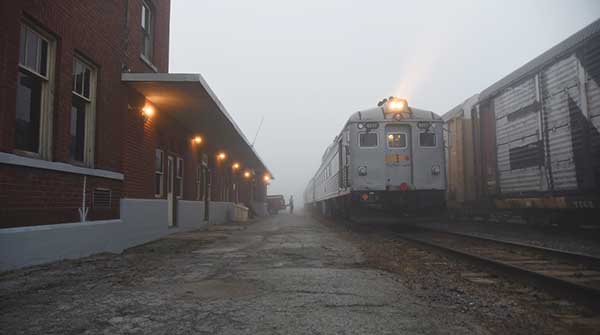Is the federal government simply letting our trains wither before cancelling the service outright?
 Can the federal government, Transport Canada and VIA Rail make travel through Northern Ontario anymore complicated? I’m asking for a friend, because public transportation in this region wasn’t designed for ordinary people who need to get from point A to point B.
Can the federal government, Transport Canada and VIA Rail make travel through Northern Ontario anymore complicated? I’m asking for a friend, because public transportation in this region wasn’t designed for ordinary people who need to get from point A to point B.
To begin with, VIA doesn’t connect any of the largest cities in the north. They don’t even make arrangements with regional transit providers to make bus/train connections possible like they do elsewhere in the country.
The services that remain – Sudbury-White River and The Canadian – suffer from chronic delays ranging from many minutes to multiple hours.
Most of the intermediate stations that haven’t been torn down are locked to the public. So if passengers don’t have access to a vehicle, they must brave the elements – potentially risking frostbite during the winter or heatstroke and mosquito bites in the summer – should their train not arrive on time.
 |
| Related Stories |
| Is it time to celebrate the return of the Northlander train?
|
| Ford needs to end the Metrolinx fiasco
|
| The politics and precarious nature of travel in the North
|
The deficiencies in our region’s transportation network became abundantly clear to me over the holidays. A major snowstorm made the only highway along the north shore of Lake Superior impassable for several days.
While the Budd Car did complete its journey without a hitch, I ultimately postponed my trip to Thunder Bay for fear of being stranded in White River.
The irony of VIA Rail apologizing for travel disruptions in the Québec-Windsor corridor and ensuing criticism by Canada’s Minister of Transport, Omar Alghabra, isn’t lost on Northerners.
VIA seems to have a lousy track record (no pun intended) of stopping just short of places where people need to get to.
Seriously, whose idea was it to skip out on a city of more than 100 000 (Thunder Bay) just a few hours further up the line from White River?
Northern Ontario is the poor cousin of what’s left of this Crown corporation’s hollowed-out system.
Of the Canadian’s 11 scheduled layovers, only three communities don’t have indoor facilities or waiting areas open to the public. Two of them are situated in Hornepayne and Sioux Lookout.
During the off-peak season, VIA Rail provides discounted Sleeper class tickets for a select number of communities in Eastern and Western Canada. These up to 50 per cent discounts provided passengers with private cabin or semi-private berth accommodations, meals, snacks and beverages, among other perks.
But, no surprise, none of them are offered in northern cities or towns.
The Trudeau government and executives at VIA Rail appear oblivious or indifferent to the challenges faced by Northerners. They are, however, quick to deflect constructive criticism or responsibility for these issues.
Canada’s intercity rail network is rotting away, literally. There are now buffer cars on the ends of some passenger coaches that VIA has identified as may have structural problems that may pose a safety concern in the event of a collision.
While VIA has issued a Request for Information (RFI), there are, to date, no plans to replace any or all of its 70+-year-old fleet.
Is the federal government simply letting our trains wither away before cancelling the service outright?
Ottawa and VIA can do better than this. These shortcomings are embarrassing, and they epitomize the state of land-based transportation in rural Canada.
Northerners need safe, affordable and reliable transportation alternatives that connect them to their communities – big and small.
For the love of all things good, fix it.
Éric Boutilier is a columnist for Northern Tracks, a self-published blog on intercity transportation in Northern Ontario.
For interview requests, click here.
The opinions expressed by our columnists and contributors are theirs alone and do not inherently or expressly reflect the views of our publication.
© Troy Media
Troy Media is an editorial content provider to media outlets and its own hosted community news outlets across Canada.

